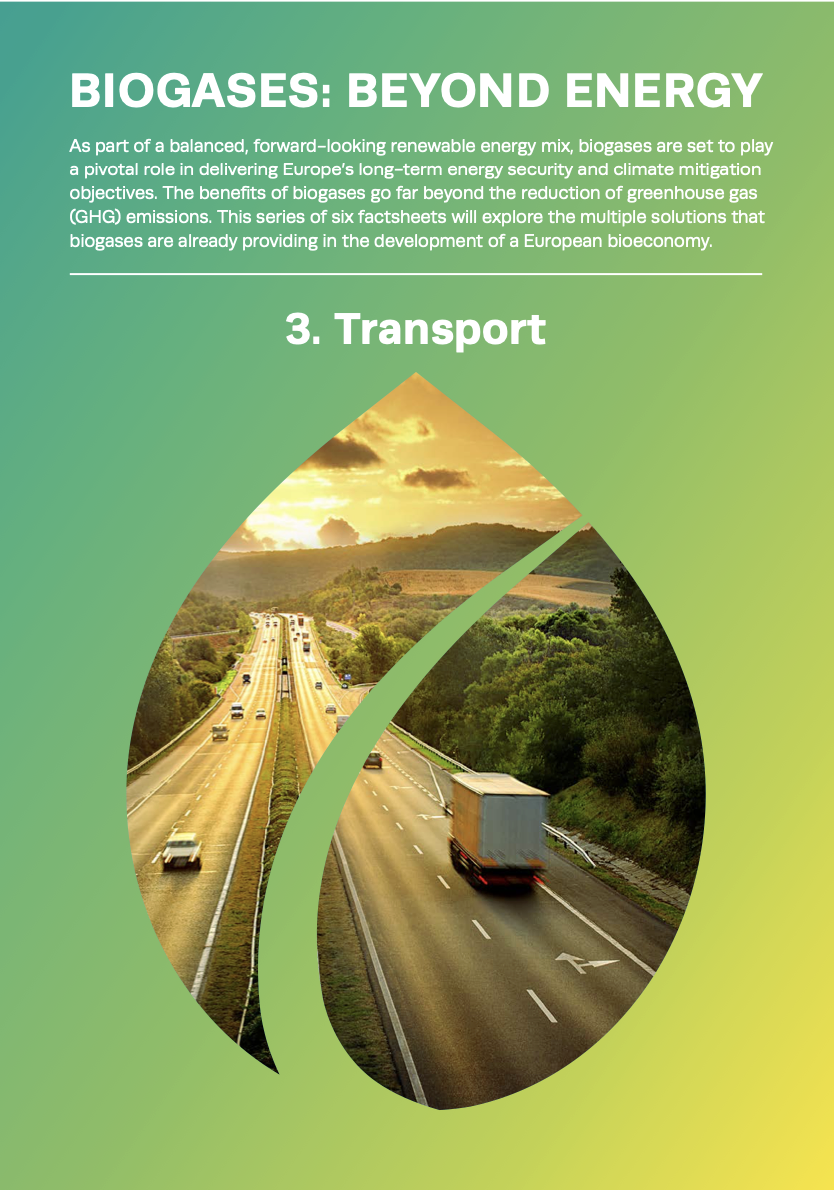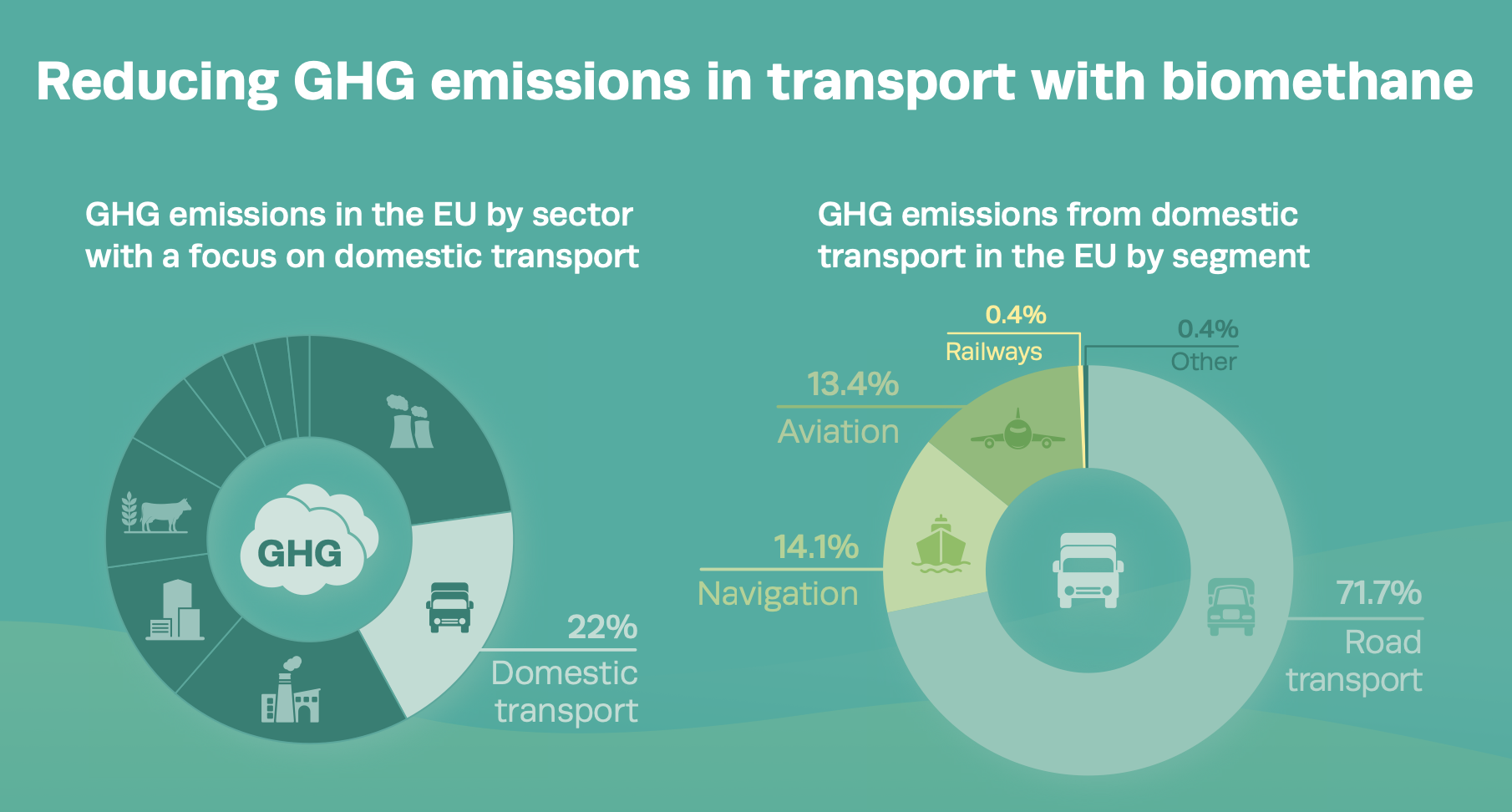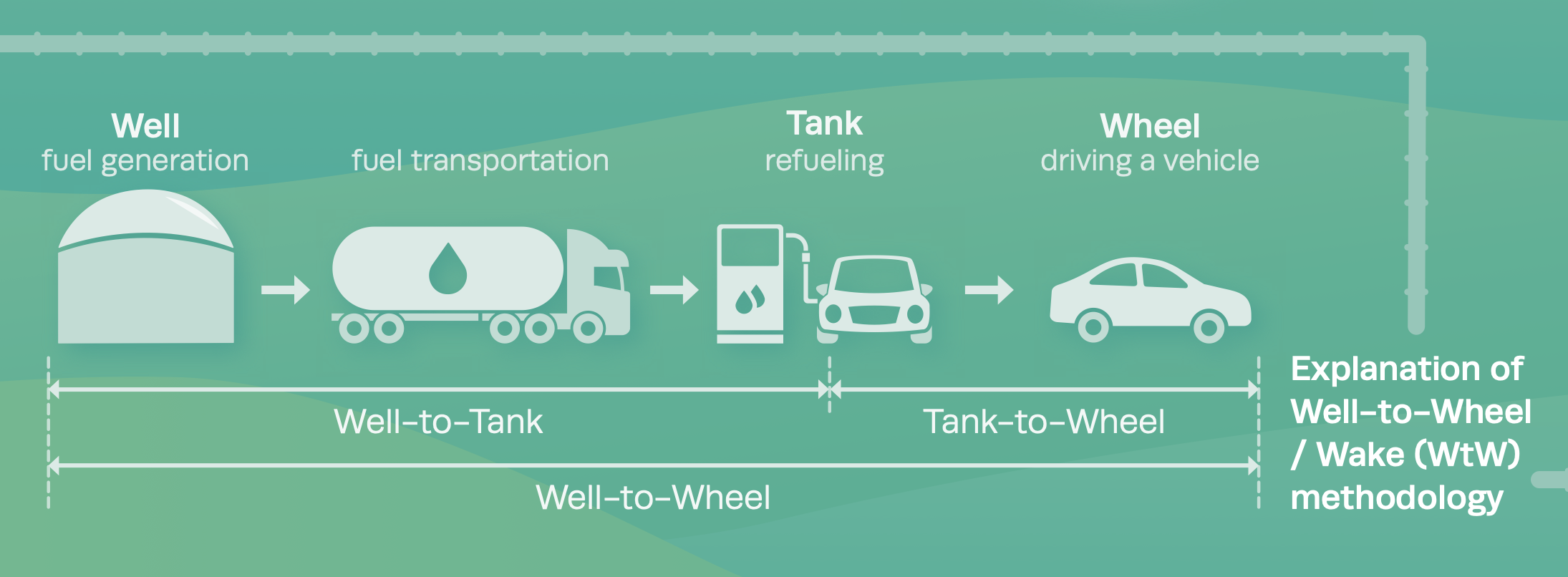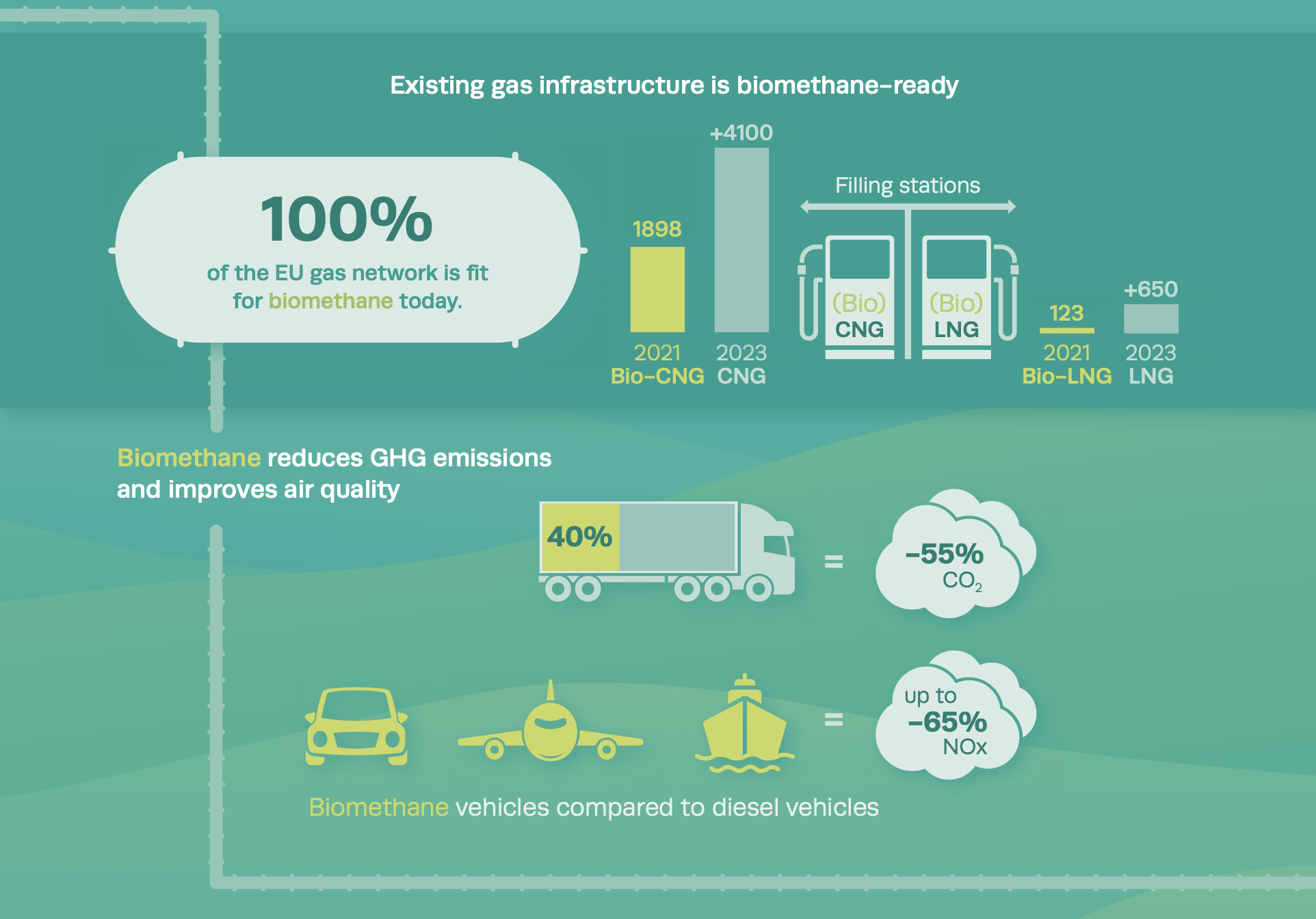Biogases will play a pivotal role in delivering Europe’s long-term energy security and climate mitigation objectives, as part of a forward-looking and balanced renewable energy mix. Besides, their benefits go far beyond the reduction of greenhouse gas (GHG) emissions. That is why attention to this source of renewable energy and scientific developments regarding biogas is increasing.

We are pleased to announce that the third factsheet of the new information campaign of the European Biogas Association (EBA) “Transport” is already available. The document is focused on the biomethane role in providing transport needs.
You can get acquainted with the first and the list of future publications by following the link.
The transport sector currently accounts for about a quarter of the EU’s total greenhouse gas emissions, despite efficiency improvements and the emergence of climate mitigation policies. Almost three quarters of the EU’s transport emissions come from road transport.
Existing policy measures are expected to curb a thirty-year upward trend in Europe’s transport emissions. Biomethane provides a sustainable and cost-competitive substitute for fossil fuels, representing one of the few readily available fossil fuel alternatives for long distance and energy intensive transport segments. This makes biomethane a key player in the transition towards a climate neutral economy.
GHG emissions in the EU by sector
As can be seen from the diagram, the focus is on domestic transport.

How can biomethane contribute to the decarbonisation of EU transport?
Well-to-Wheel/Wake (WtW) methodology, which allows for a complete assessment of the environmental impact of a given fuel, shows biomethane to be a high performer in terms of GHG emissions reduction in transport.
According to analysis using the WtW principle, a vehicle running on 40% biomethane mixed with natural gas can reduce its CO2 emissions by 55%. Depending on the feedstock used to generate the biomethane, a vehicle running on 100% bio-LNG can even achieve a negative GHG emissions balance. Even on a Tank-to-Wheel/Wake basis, which only considers emissions produced once the fuel is in the vehicle, a blend of 20% bio-LNG can reduce maritime GHG emissions by up to 18%; at 100% bio-LNG, GHG emissions reduce by up to 93% in the combustion cycle.

Is biomethane a cost-effective solution for transport decarbonisation?
Biomethane is one of the most cost-competitive advanced biofuels available today. Europe is the world’s leading producer of biogas and biomethane; European production of compressed and liquified biomethane as transport
fuel (bio-CNG and bio-LNG) also continues to grow. Furthermore, the EU is leading the way in technology for gas mobility, which has become a mainstream transport solution.
Because biomethane consists of the same molecule as natural gas, it is already used as a renewable alternative to fossil fuels in gas vehicles and liquid natural gas (LNG) vessels: little to no change to the existing compressed natural gas
(CNG) and LNG-fuelled engines is required. In the same way, biomethane can be directly injected into the gas grid and the already well-developed network of CNG and LNG filling stations. The deployment of biomethane to replace fossil fuels does not require any additional investment of resources and time to develop new infrastructure and technology.
Can EU refuelling infrastructure accommodate biomethane for use in transport?
The existing EU refuelling infrastructure is biomethane-ready and able to handle the total EU bio-LNG and bio-CNG production. In contrast, the infrastructure for recharging electric vehicles and refuelling those running on hydrogen is unevenly developed across the EU. Numerous biomethane- ready CNG and LNG filling stations are already in place throughout the TEN-T network, with a significant portion of the facilities delivering bio-CNG and bio-LNG via direct physical delivery or guarantees of origin. The fast-expanding EU gas refuelling network now comprises over 4,000 CNG and 650 LNG facilities according to data from NGVA Europe, and there are approximately 1,898 bio-CNG filling stations and 123 bio-LNG filling stations operational throughout Europe, as EBA data shows.

What about the future?
With the right policy and market conditions, EU biomethane production can achieve the REPowerEU target of 35 bcm by 2030 and could reach 151 bcm by 2050. Biomethane has the capacity to play an important role in achieving transport decarbonisation, especially in areas of transport which have difficulty adapting to use other alternative fuels.
In road transport, 15 bcm (approx. 154 TWh) would be sufficient to power approximately 20% of the EU’s 2050 heavy-duty fleet with biomethane, according to NGVA Europe; 14 bcm would cover 20% of the anticipated bio-LNG demand in the shipping sector in 2050, as reported by SEA-LNG.
Biomethane also has the potential to decarbonise aviation, a transport segment whose emissions are notoriously hard to abate. The aviation sector is uniquely dependant on gas-turbine engines and jet fuel. Both at industry and at government level, however, biomethane – specifically, sustainable aviation fuel (SAF) derived from biomethane – is being seen as a realistic and viable option for this form of transport. Biomethane can pave the way to a more sustainable future for the aviation sector in the short to medium term; a number of companies are now investing in projects that aim to produce SAF using biomethane.
Read more about the information campaign at the link.
Download the first factsheet “Energy system integration” here.
Download the second factsheet “About regenerative agriculture” here.
Download the third factsheet “Transport” here.